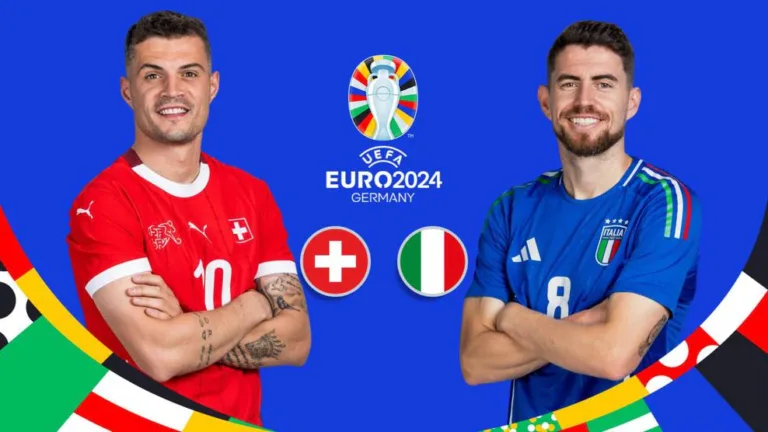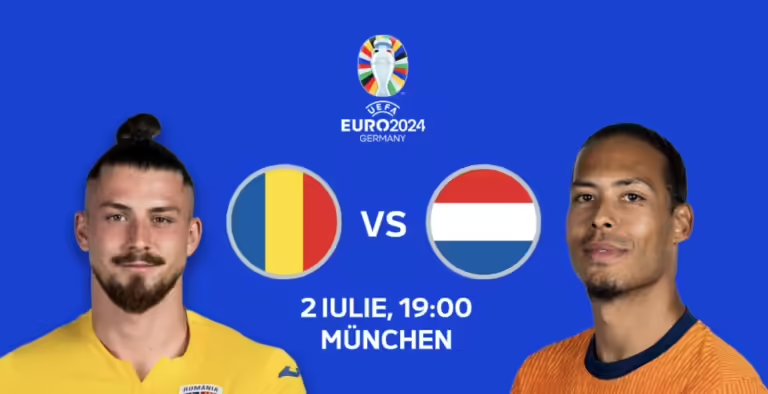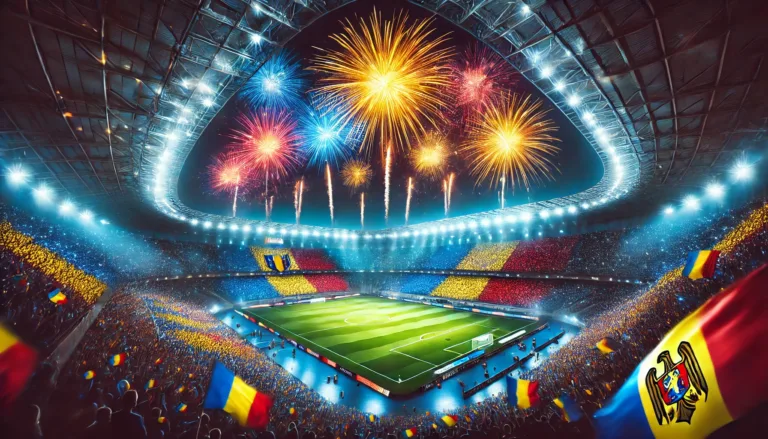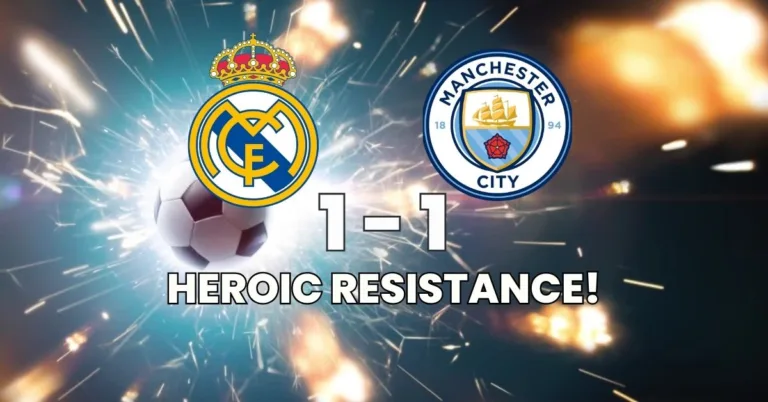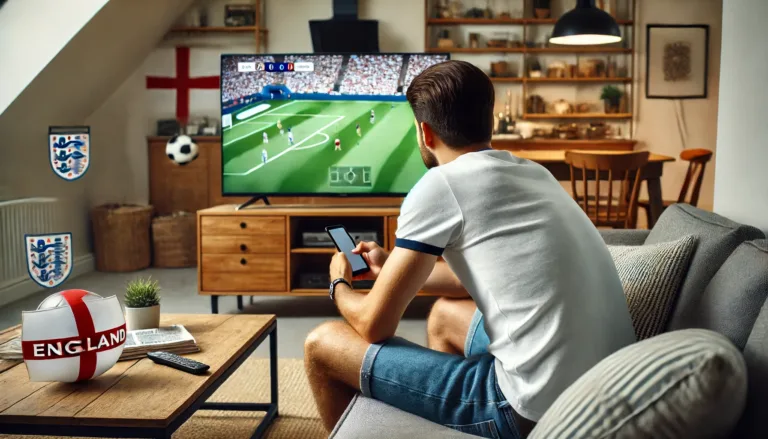Tactical Analysis Euro 2024: How Spain Adapted Against Germany
Spain managed to secure a victory over Germany in the Euro 2024 quarterfinals by adapting well to the challenges posed by Nagelsmann. Germany successfully closed down the wings and forced Spain into a less comfortable position, redirecting their offense through the middle, which is quite unusual for Luis de la Fuente’s team. Nonetheless, Spain adapted effectively and will face France in the tournament semifinals.
Spain’s Pressing Limits Kroos’ Influence
We all know that Toni Kroos is one of the most important players in Germany’s build-up play, with Nagelsmann’s team relying on him to distribute the ball, find key passes, and exploit spaces. However, in this match, Toni Kroos completed a total of 76 passes, including both periods of extra time. In the round of 16 against Denmark, Kroos had 87 passes in the two halves of regular time. This statistic cannot be explained by possession, as Germany’s possession in the semifinals was 52%, compared to 55% in the round of 16, which is similar.
Toni Kroos tried to dictate the pace of the game from his usual position, tucked on the left wing, in line with the two central defenders. During the build-up phase, Spain set up a pressing structure to block access through the center of the field, forcing Germany to build their play on the wings. Dani Olmo stayed close to Toni Kroos in Germany’s defensive third to prevent him from receiving the ball.
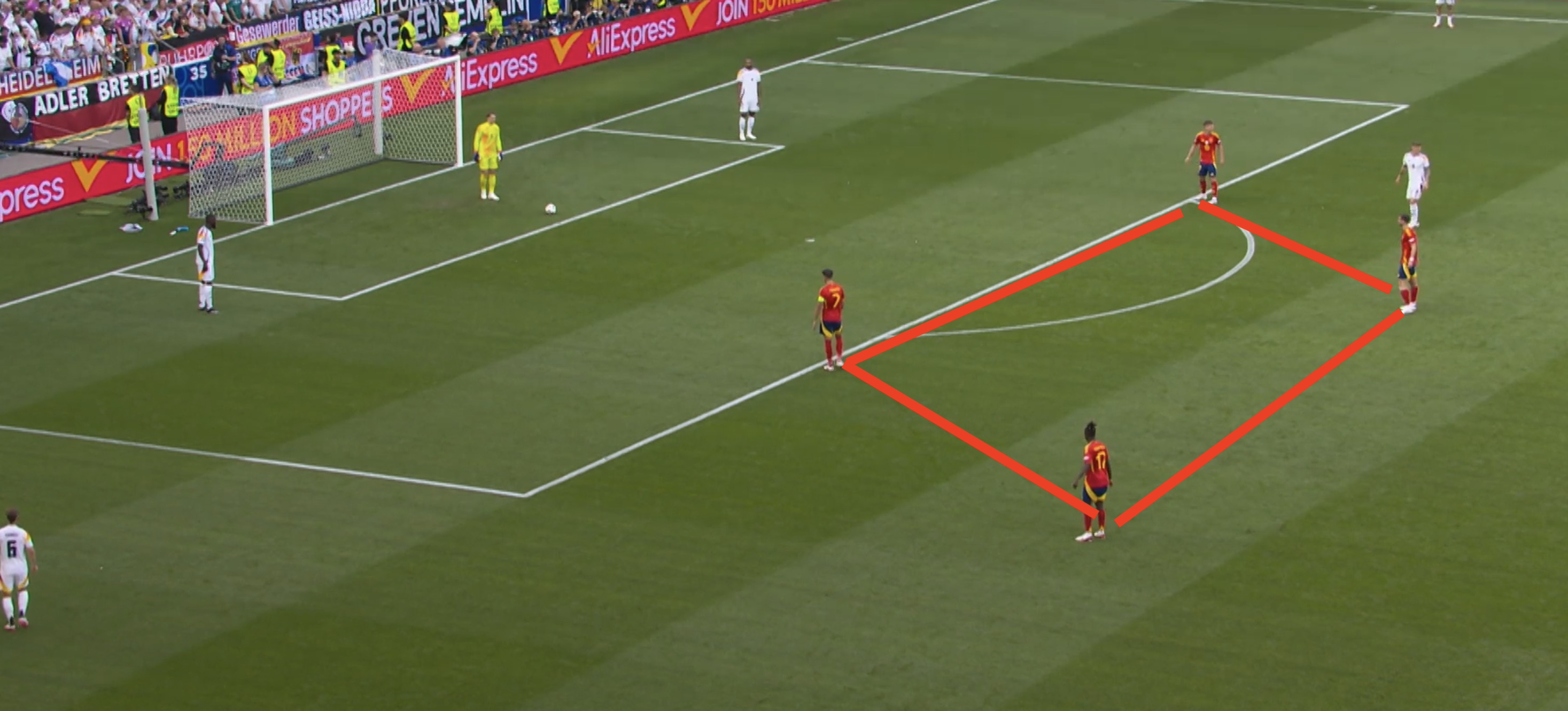
As a result, Toni Kroos had to adopt a much more fluid positioning than usual, moving away from his typical left-sided area. He sometimes positioned himself between the two central defenders to try to escape the pressure. However, even then, once the defensive line advanced, Dani Olmo would press Kroos as soon as the ball reached him.
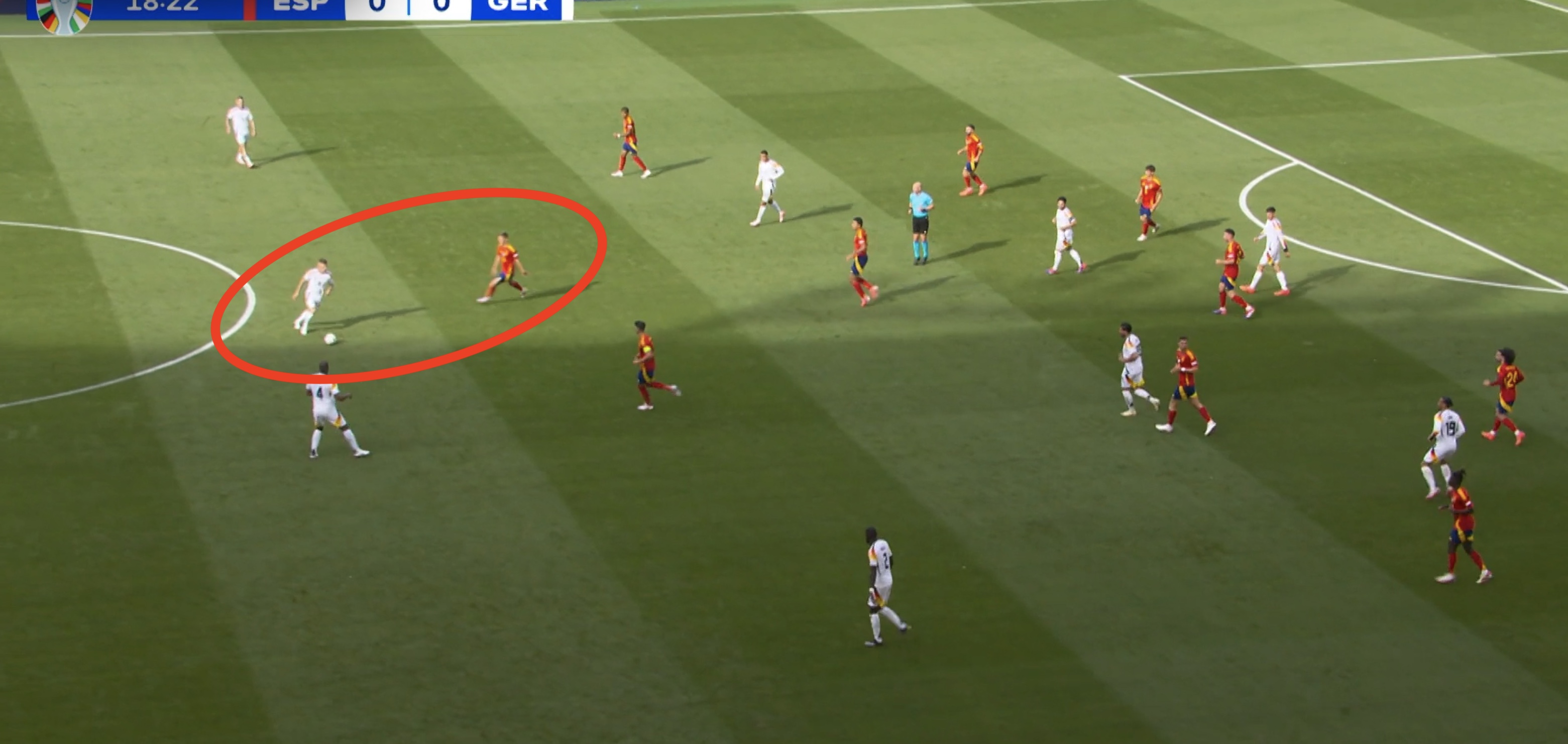
How Germany Exploits the Spaces Left by Spain’s Pressing
The weakness of Spain’s pressing, as discussed earlier, can lead to the following situation, which is illustrated in the image above. Germany arranges a defensive line of three players: Rüdiger, Toni Kroos, and Jonathan Tah. If Spain presses with a man-to-man structure involving Morata, Nico Williams, and Dani Olmo, this allows the full-backs and wingers to exploit the space left behind.
Consequently, situations can arise where the two manage to bypass the defensive line and cross the ball. Nagelsmann brings Niclas Füllkrug onto the field, who, along with Kai Havertz, poses a significant threat in the penalty area and becomes a focal point for crosses from the wings. The shot map shows that in the second half, there were more shots directed at Unai Simón’s goal, coming from the center of the penalty area.
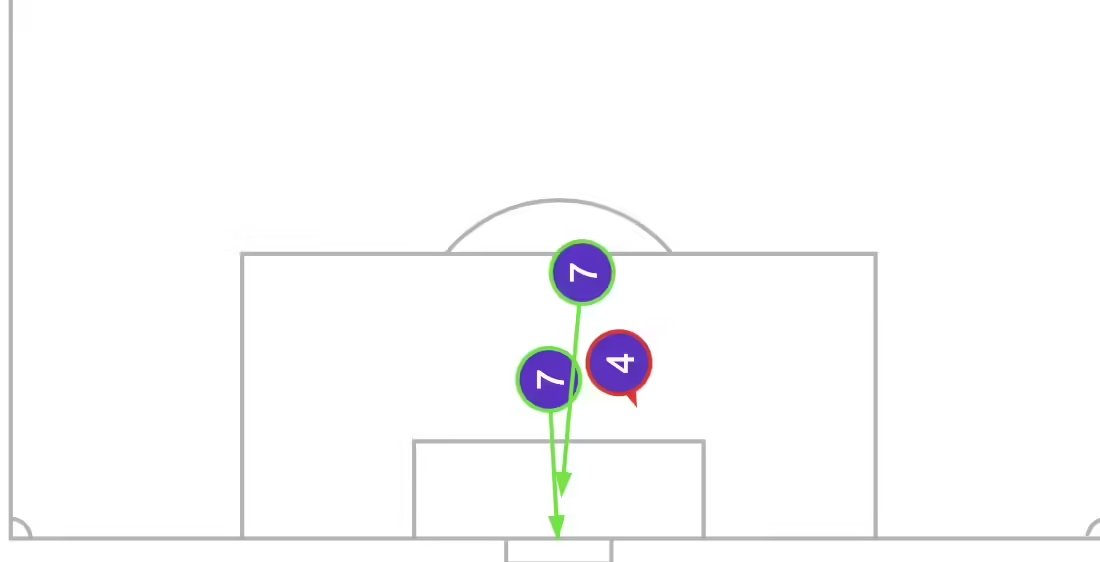

Germany’s Strategy: Shutting Down the Wings
It is obvious that Spain has posed the greatest threats on the flanks in this competition through Nico Williams and Lamine Yamal. These two players are the main sources of depth and incisiveness for De la Fuente’s team. However, in this match, Germany successfully shut down the flanks. The key duels in this game were between the pairs on the left flank: Cucurella and Nico Williams against Rüdiger and Kimmich.
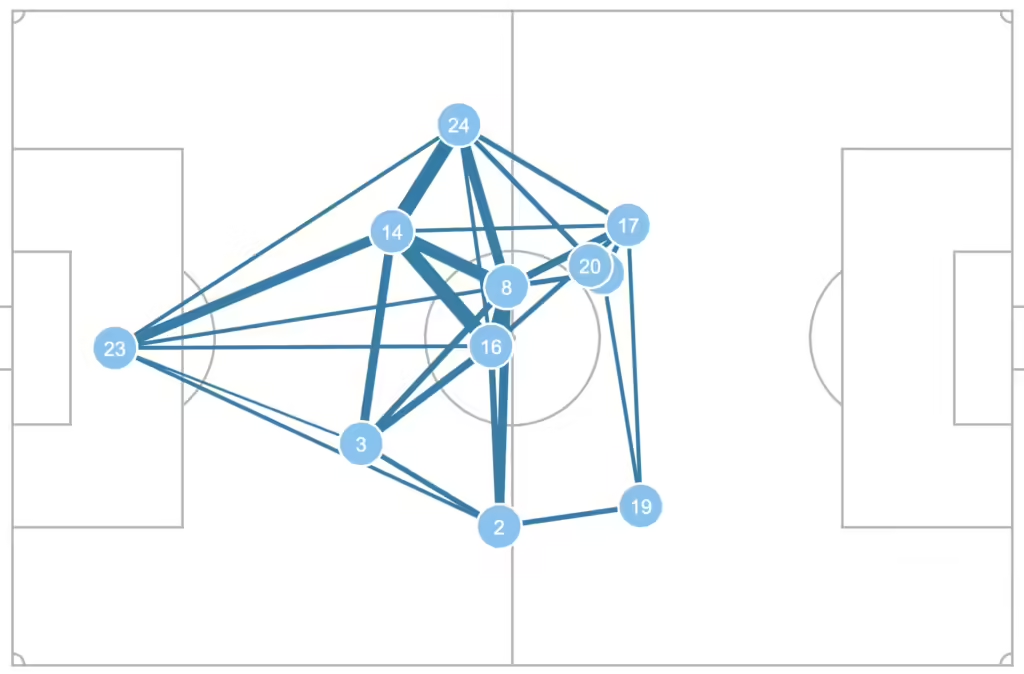
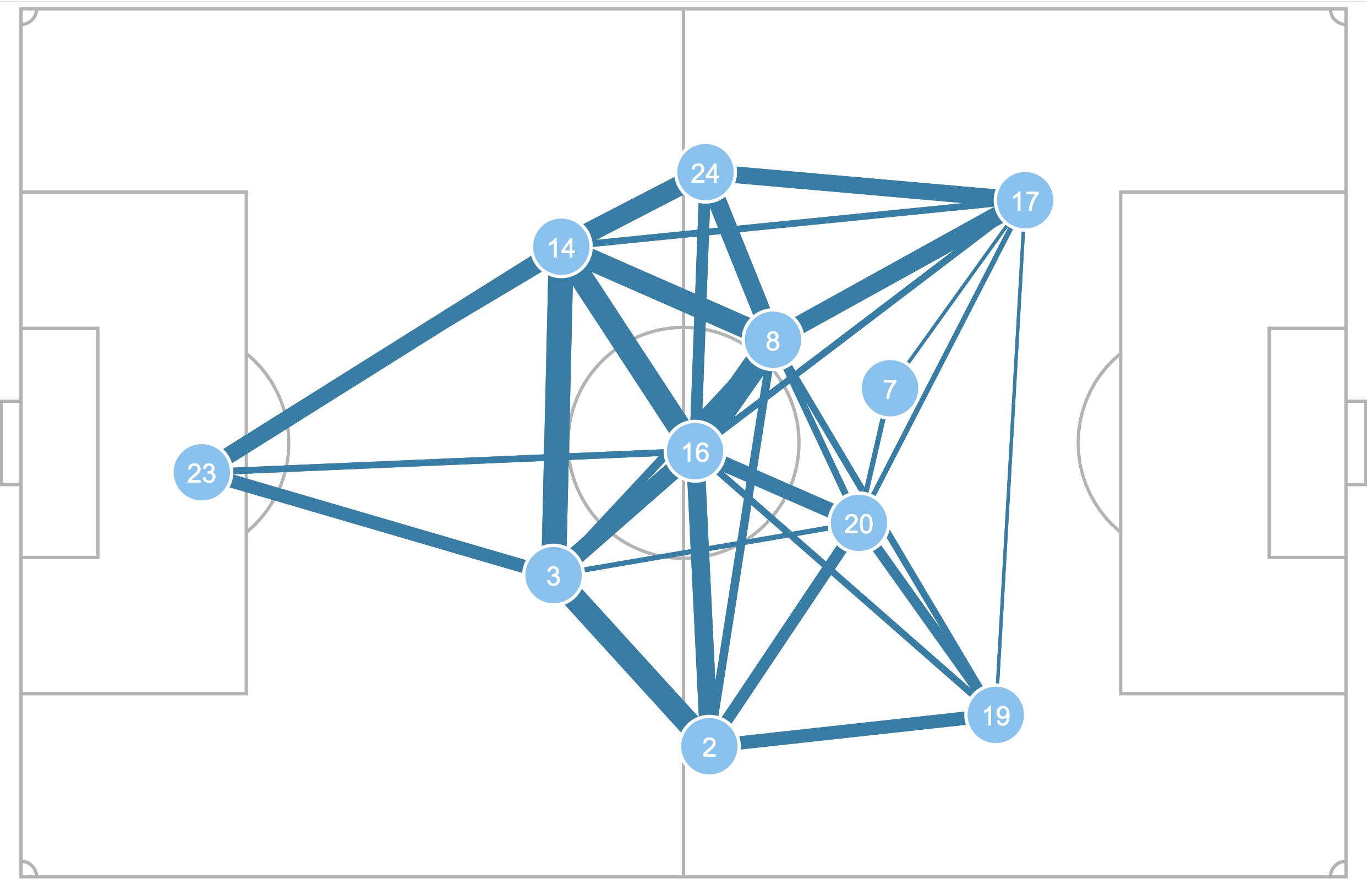
If we look and compare the two pass maps, we see that against Italy, Nico Williams and Lamine Yamal were the most advanced players in Spain’s team. Additionally, an interesting point is Nico Williams’ positioning. In the match against Germany, Nico Williams positioned himself much more centrally than he did against Italy in the group stage. Thus, Germany forced Spain to build and attack more through the center of the field, a tactic that disrupted Spain’s rhythm. This is also reflected in Spain’s first-half shots, where all their attempts were from outside the 16-yard box.
How Did Spain Break the Deadlock?
Spain managed to unlock the game through their midfielders, Dani Olmo and Fabian Ruiz, by adapting to Germany’s tactic of shutting down the flanks. Often, Olmo was the target of Unai Simón’s clearances, who chose to look for Olmo and Morata with long balls. These players either extended the ball or returned it to Nico Williams, who collected it after the aerial duels.
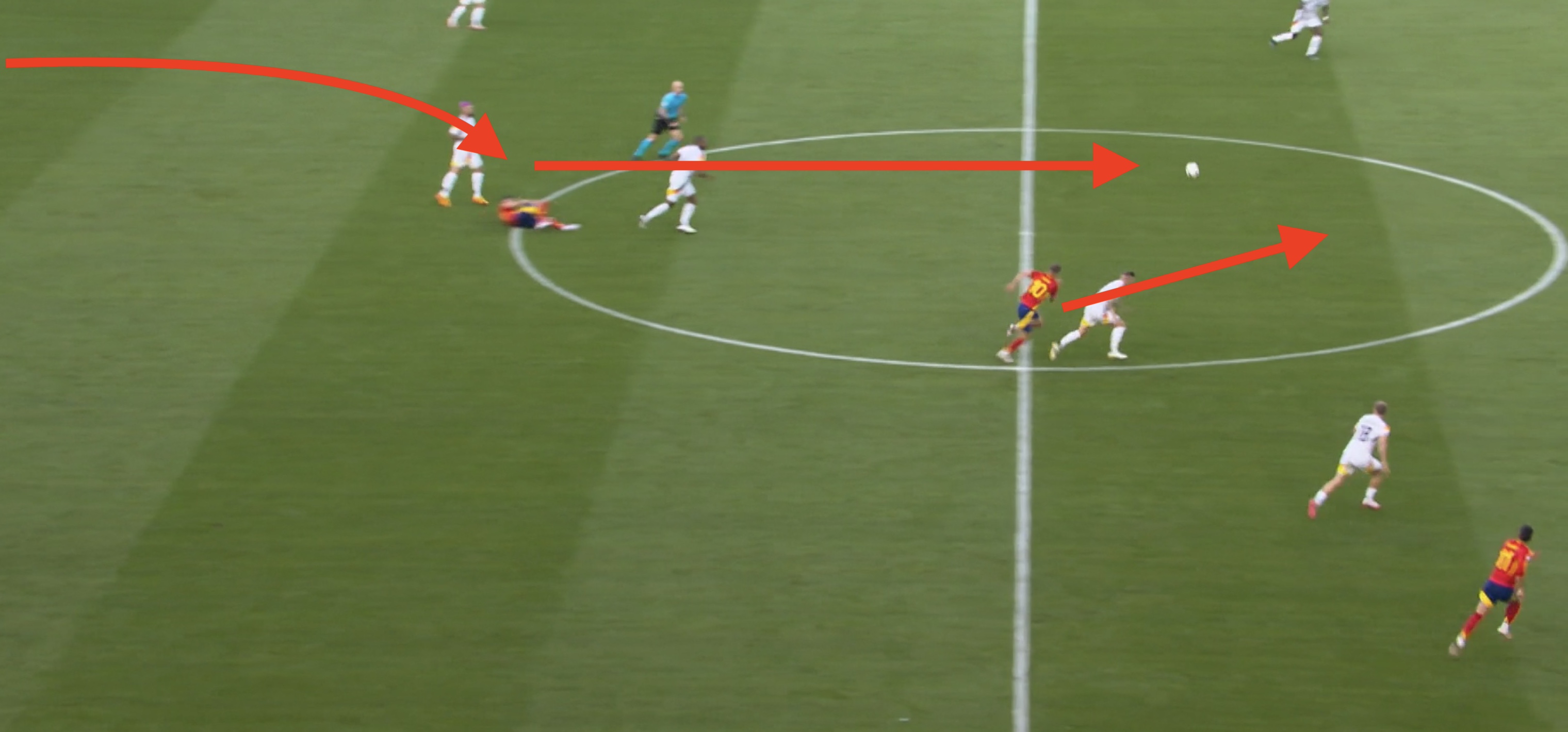
The goal-scoring opportunity was made possible by a run from Dani Olmo through the center of the field, with Fabian Ruiz already in the box. Ruiz distracted Andrich, who left the space in front of the penalty area open for Dani Olmo’s sprint. Normally, Rüdiger would have marked Fabian Ruiz, Kimmich would have marked Nico Williams, and Andrich would have been vigilant in that area, preventing Olmo from receiving the ball there.
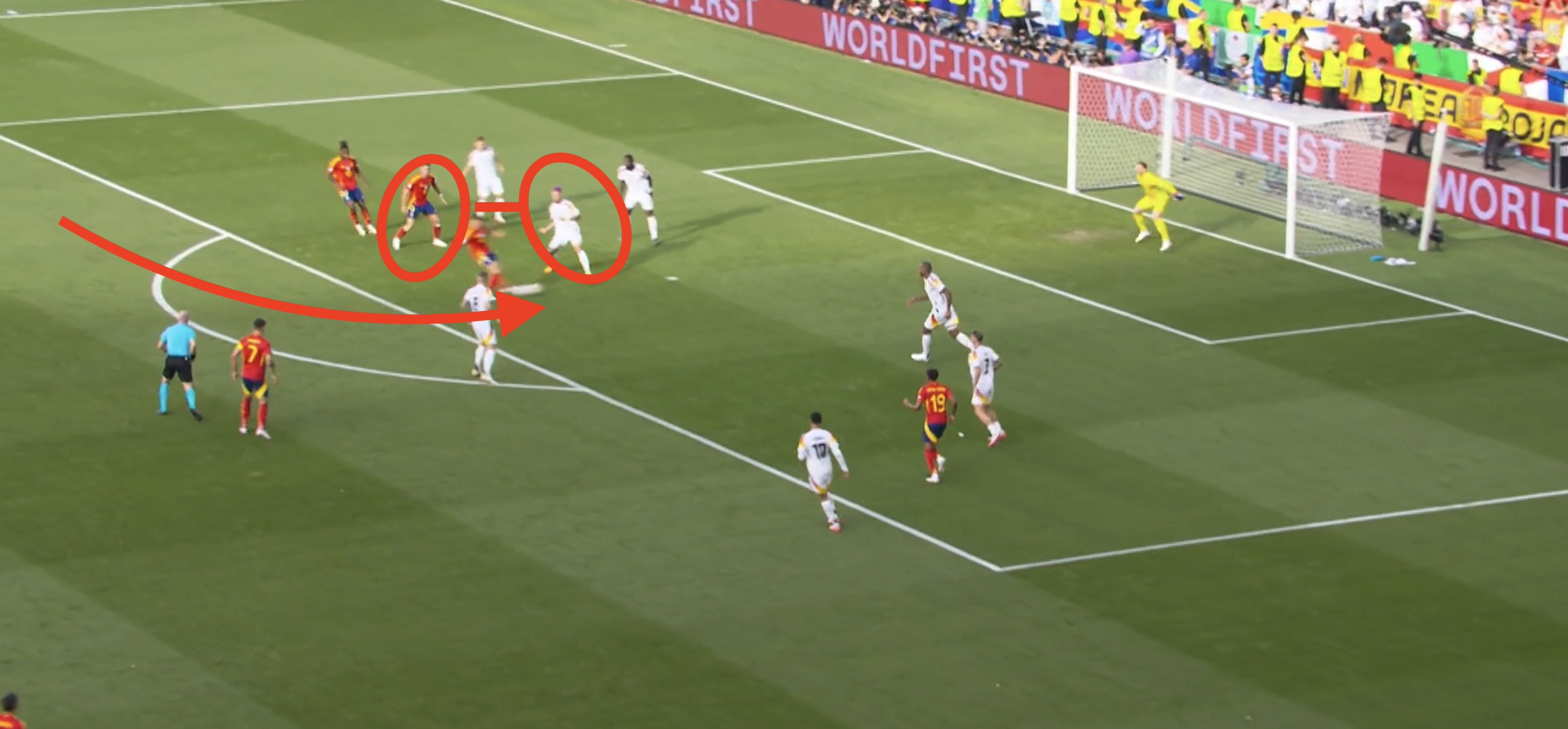
The second goal also came from the center of the penalty area, as Spain was willing to send players to attack the center. This time, it was not Dani Olmo who attacked the center, but the one who delivered the cross. Looking at the goal situation, we see that Spain created a numerical balance in Neuer’s penalty area, with Joselu, Merino, and Oyarzabal each engaged in one-on-one duels with Germany’s defenders.
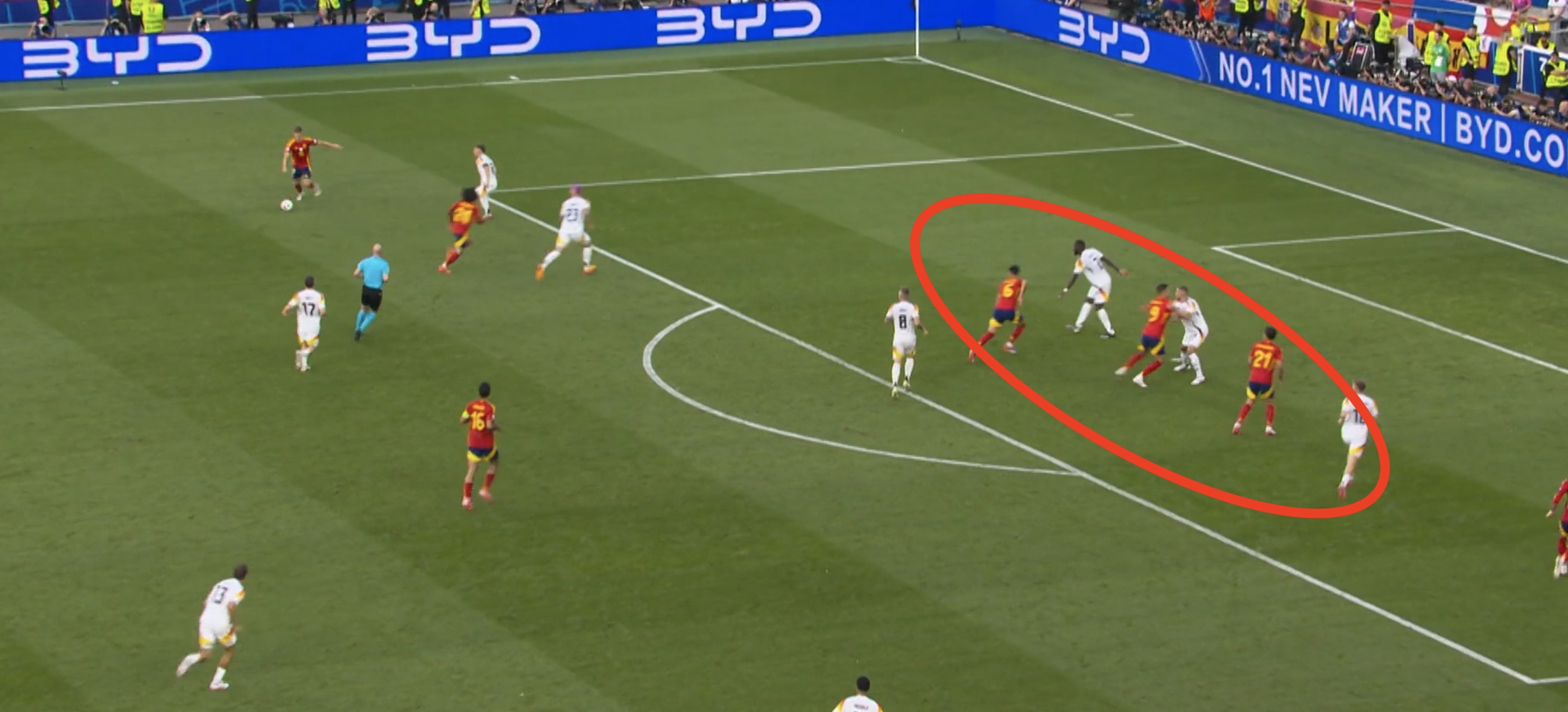
Conclusion
Spain quickly adapted to the tactical challenges posed by Nagelsmann’s team, and Dani Olmo was a key player for de la Fuente in this victory. Currently, France is the favorite to win the tournament with a probability of 30.49%, while Spain is in second place with a probability of 30.3%. The two favorites will meet in the semifinal, where we will see if Luis de la Fuente can also break down the French defense.

